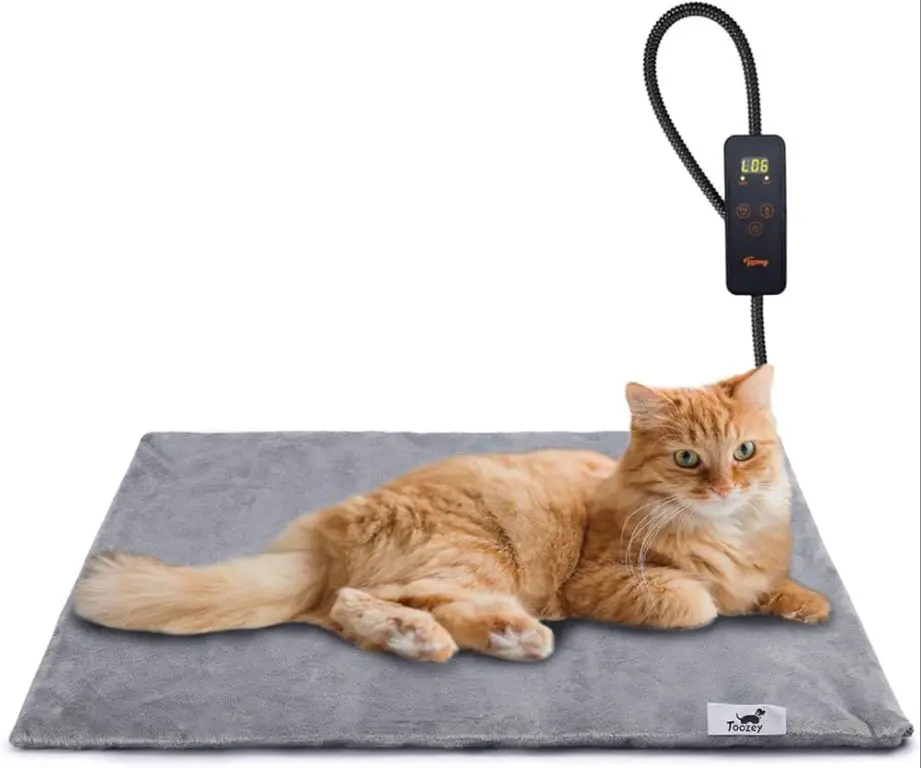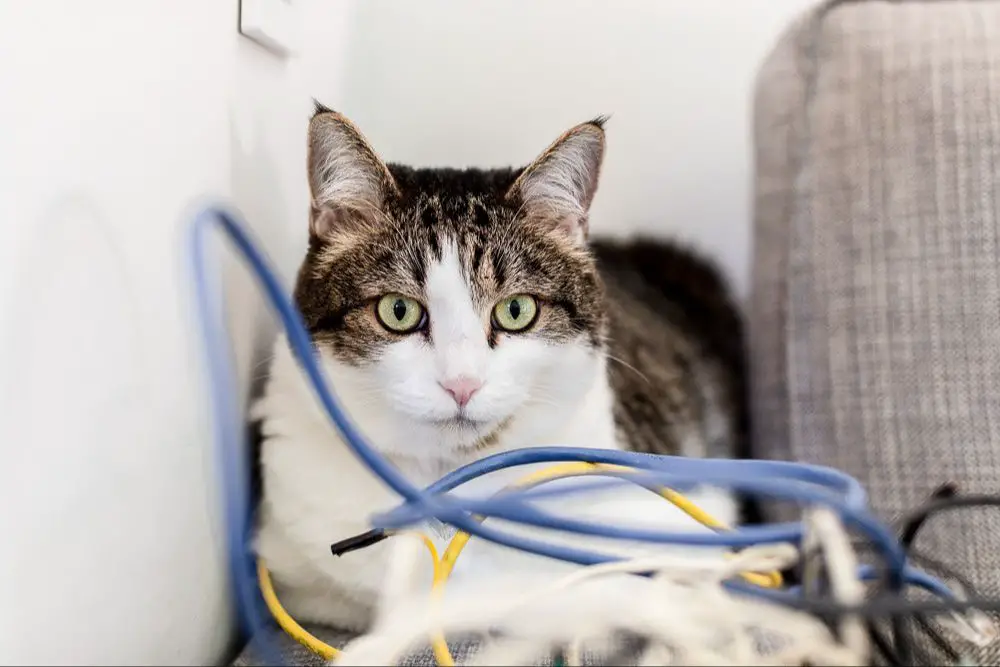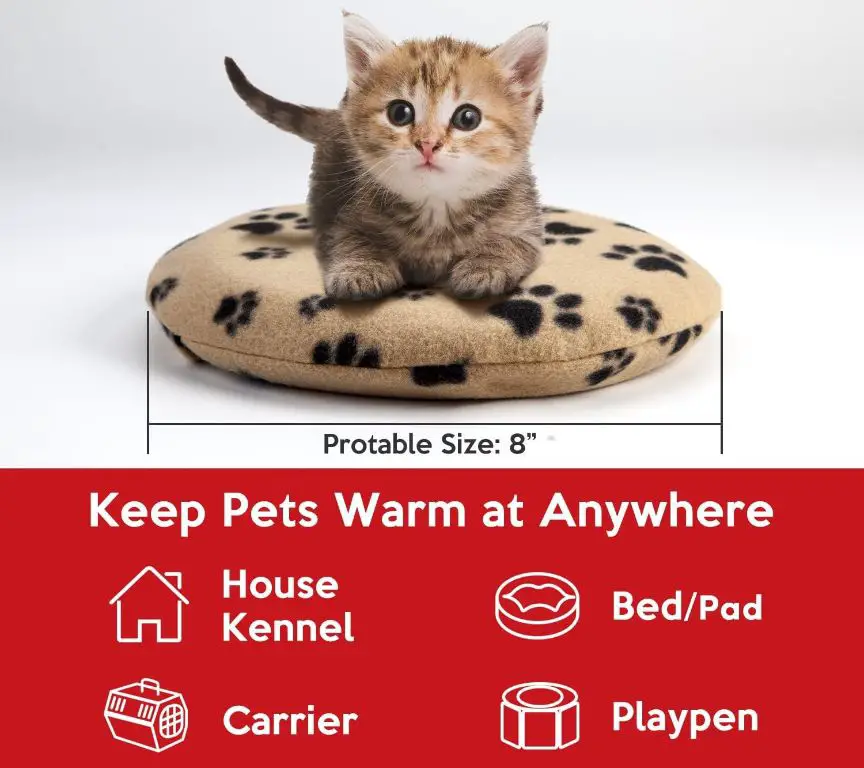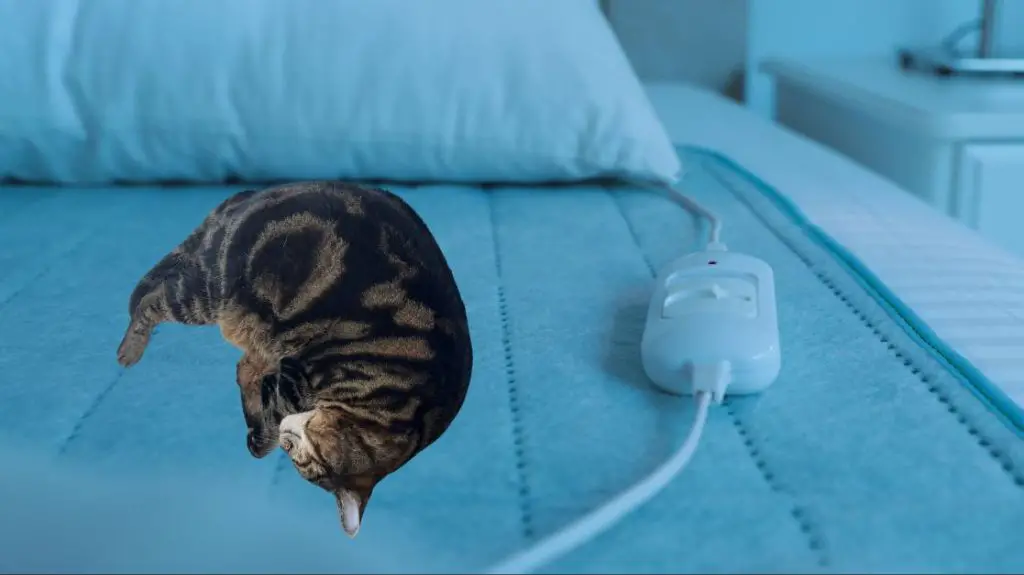Cat heating pads have become popular products for keeping cats warm and comfortable. Many pet owners find that their cats enjoy curling up on a heated pad, especially during colder months. The ambient heat can help ease arthritis pain and increase blood circulation. However, heating pads also carry risks if used improperly. It’s important to choose a pad designed specifically for pets, monitor your cat’s usage, and follow all safety guidelines. When used with care, heating pads can be a safe way to provide supplemental warmth for cats. But negligence could lead to injuries like burns or electric shocks. This article will overview both the benefits and potential dangers of cat heating pads, providing pet owners the knowledge needed to make an informed decision about using one.
Benefits of Heating Pads for Cats
Heating pads can provide several benefits for cats, especially older cats or those with medical conditions. Some of the main benefits include:
Help old, sick, or arthritic cats stay warm – Cats tend to sleep more as they age, and their ability to regulate body temperature can decline. Heating pads give elderly or ill cats a warm, cozy place to rest and help maintain their body heat. This can relieve discomfort from arthritis or other conditions (source).

Relieve muscle aches and pains – The soothing warmth from heating pads can relax muscles and increase blood flow. This can help alleviate stiffness, soreness, and pain from arthritis, injuries, or strains (source).
Provide comfort and security – Heating pads give cats a warm, comforting place to rest and sleep. The contained heat can simulate the cozy feeling of snuggling or being held. This sense of security and wellbeing is calming for many cats.
Potential Risks
Heating pads pose some potential risks to cats that pet owners should be aware of before using them. The main risks are overheating and burns, chewing on cords, and unnoticed malfunctions.
One of the biggest dangers of heating pads is that they can overheat and cause burns, especially if a cat lies directly on top of the pad (1). Cats have very sensitive skin and their bodies cannot dissipate heat as effectively as humans. Pads that don’t automatically shut off or adjust temperature can quickly overheat and cause severe burns. According to Toozey, faulty heating pads have even caused death in pets (2).
Another risk is that cats may chew on the cords of electric heating pads. Cats are naturally drawn to cords and often chew on them, which poses an electrocution risk. Owners should keep cords out of reach or use cordless heating pads.
Finally, heating pads can malfunction without the owner noticing. If a pad stops working properly, it may not provide enough warmth or could overheat. Owners need to regularly check that pads are functioning as expected to avoid issues.
With some precautions, heating pads can be used safely for cats. But owners need to be vigilant about potential risks like burns, chewing hazards, and malfunctions.
(1) https://khpet.com/blogs/all-pets/are-heating-pads-safe-for-cats-and-dogs
(2) https://toozey.com/blogs/cats-are-family/should-your-cat-get-a-pet-heating-pad
Choosing a Safe Heating Pad

When selecting a heating pad for your cat, it’s important to choose a model designed specifically for pets, not humans. Look for key safety features like auto shut-off, correct wattage based on your cat’s weight, and chew-resistant cords.
An auto shut-off feature is critical to prevent overheating and burns. This will automatically turn off the heating pad after a certain time period, usually 10-12 hours (1). Models without auto shut-off can pose a fire hazard if left on indefinitely.
Pay close attention to the wattage rating and match it to your cat’s weight, as specified by the manufacturer. Using a heating pad with too high wattage for a lightweight cat may lead to overheating. As a general rule, choose low wattage (1-5 Watts) for cats under 10 lbs and medium wattage (6-10 Watts) for larger cats (2).
Finally, look for cordless heating pads or models with chew-resistant cords coated in steel or Kevlar. Cats may be tempted to bite and chew on cords, which can damage the pad and expose live wires (1). It’s safest to avoid cords altogether or use reinforced protective coatings.
With the right safety features for auto shut-off, wattage, and cord protection, you can provide a comfortably warm and soothing heating pad experience for your feline friend.
Sources:
(1) https://khpet.com/blogs/all-pets/are-heating-pads-safe-for-cats-and-dogs
(2) https://toozey.com/blogs/cats-are-family/should-your-cat-get-a-pet-heating-pad
Proper Usage
When using a heating pad for your cat, it’s important to take precautions to ensure safe usage. According to smallanimalchannel.com, you should always start by placing the heating pad on the lowest setting first. The temperature should be monitored periodically by placing your hand on the surface to ensure it does not get too hot. Heating pads should never be left unattended when in use by a cat. As advised by TheCatSite.com, you should check on your cat frequently to make sure they are not overheated or distressed. Extra care should also be taken with kittens or elderly cats whose temperature regulation may be impaired. The ASPCA recommends using heating pads cautiously with very young or elderly cats as they may not be able to move away if the temperature becomes uncomfortable. With proper precautions, heating pads can be used safely, but require supervision and low heat settings to avoid injuries.
Signs of Trouble
Heating pads can be dangerous if used improperly. Cat owners should watch for these signs that indicate the heating pad is unsafe:
-
Reddened skin – The heat may be too high if it is causing inflammation and irritation on your cat’s skin. Discontinue use of the heating pad.
-
Excessive panting/drooling – Heavy panting and drooling shows your cat is getting overheated. Turn off the pad and allow your cat to cool down.
-
Chewing or clawing at pad – If your cat is trying to remove the pad, they are likely uncomfortable with the temperature. Adjust to a lower setting.
-
Unwillingness to use – If your cat refuses to lay on the heating pad, it may be too hot for their comfort level. Try a cooler setting.
Pay close attention to your cat when using a heating pad to watch for signs of overheating or discomfort. Discontinue use if any of these warning signs are observed.
Alternative Warming Options
There are several alternative options to traditional electric heating pads that can help keep cats warm and comfortable without some of the risks of heated pads:

Microwavable heating discs – These reusable fabric discs can be heated up in the microwave and will retain heat for up to 12 hours. They provide a gentle, consistent warmth without electricity. Just make sure your cat doesn’t chew or scratch the disc. Sources like Amazon offer a variety of microwavable discs for pets.
Warming cat beds – Look for insulated beds made of materials like faux lambswool that reflect your cat’s own body heat back. Self-warming beds containing reflective layers or heat-reflective stuffing can raise the bed’s temperature by several degrees. According to Reddit users, self-warming beds work well when paired with a microwavable disc.
Insulated cat houses – For outdoor cats, an insulated shelter raised off the ground provides protection from cold and wetness. The small enclosed space traps body heat while insulating materials like straw or foam board provide extra warmth.
Window perches in sunny spots – Cat window beds placed in pools of sunlight streaming through windows provide a cozy, soothing heat source. Opt for perches with sides to block drafts and make sure your cat has an escape route if the sun gets too hot.
When to Avoid Use
There are certain situations in which it is best to avoid using heating pads for cats:
-
Kittens under 1 year – Kittens’ bodies are still developing and may be more sensitive to high heat. It’s best to avoid heating pads for kittens under 12 months old (source).
-
Diabetic cats – Diabetic cats may have reduced sensation in their paws and skin, making it easier for burns to occur from overheating without them noticing (source).
-
Unsupervised use – Never leave a cat alone with a heating pad turned on. The temperature should be monitored and regulated (source).
-
Defective products – Avoid using heating pads with exposed coils, frayed cords, or other defects which pose safety risks (source).
Safety Tips
It’s important to take precautions when using heating pads for cats to ensure safe usage. Here are some key safety tips:
Always supervise your cat during their first few uses of a new heating pad. This allows you to monitor their behavior and ensure they are not showing signs of overheating or discomfort. Once you see your cat is using the pad safely, you can allow unsupervised use (Litter Robot).
Consult your veterinarian before using a heating pad, especially if your cat is elderly, sick, or has any medical conditions. Your vet can advise if a heating pad is suitable and recommend safe settings (Techno Meow).

Always unplug the heating pad when not in use to prevent overheating hazards. Don’t allow the pad to be covered completely by blankets or your cat’s body, as this can trap heat (KH Pet).
Set the heating pad to the low or medium setting to avoid overheating. Higher settings may get too hot for cats. Check the pad’s surface temperature periodically with your hand.
Don’t leave heating pads turned on overnight or for long periods unattended. Only use pads designed for pet use that have automatic shut-off features.
Provide ample space for your cat to move on and off the heating pad at will. Never force or confine a cat to stay on a pad if they want to leave.
Conclusion
Heating pads can provide benefits for cats if used properly, such as soothing arthritis pain and keeping cats warm. However, there are some risks to be aware of, like burns or overheating. By following safety guidelines, such as monitoring usage and choosing low temperature settings, pet owners can minimize any dangers when using heating pads for cats.
It’s always best to consult your veterinarian if you have any concerns about your cat using a heating pad. They can evaluate your cat’s specific needs and make recommendations on safe heating pad options and usage instructions tailored to your feline companion. With some common sense precautions, heating pads can be a safe way to provide warmth and relief to cats.

